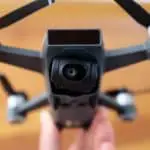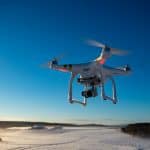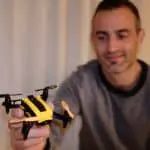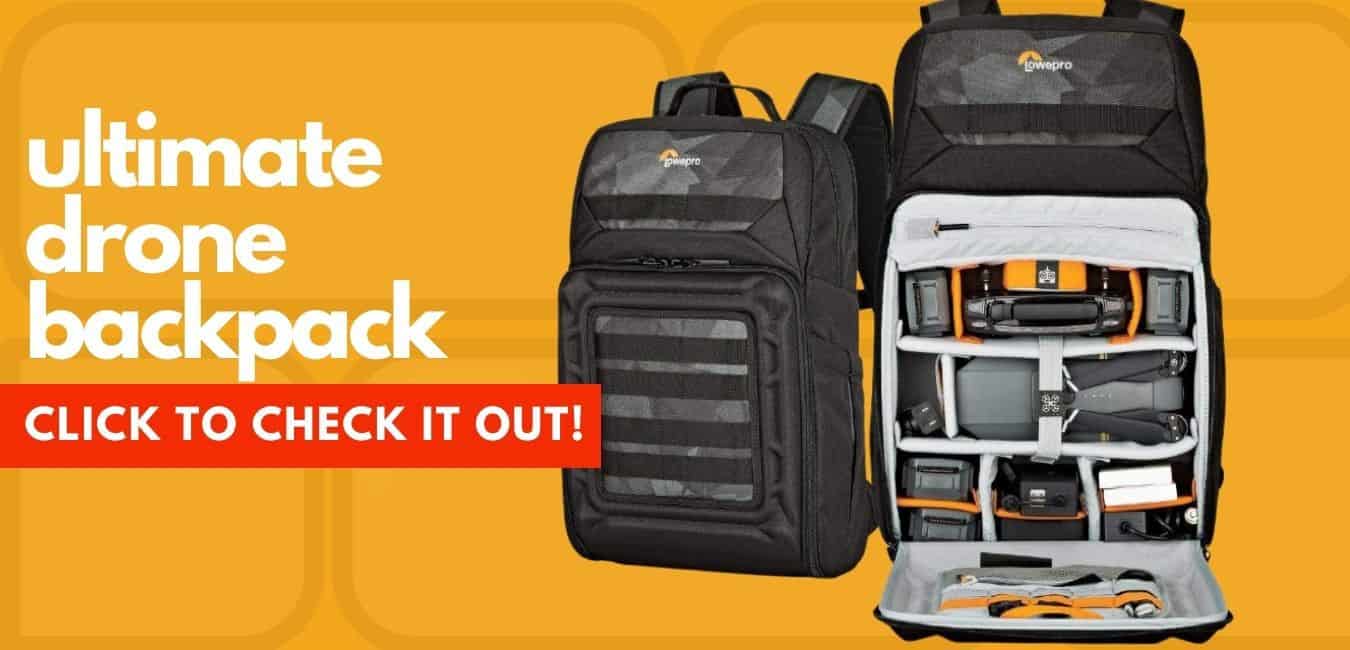The 8 Best Selfie Drones on the Market in 2021 – Quick Reviews
Want to know what the best selfie drones are? Are you looking for a simple way to take a selfie with a drone? Well, you are in the right place! Read on to find out what to look for in a selfie drone, what makes a good selfie drone, and of course, which selfie drones are best.
Zerotech Dobby
The best selfie drone is the Zerotech Dobby. It encapsulates everything that makes a selfie drone special. It’s tiny, reliable, well made and above all else – fun. Due to its diminutive size, it’s also the best pocket selfie drone.
GoolRC T33
The GoolRC T33 is the best selfie drone under $100. Although it’s certainly not pocketable, its incredible value with a lot of features that make it a good selfie drone.
Quick Links
Forget Selfie Sticks – get one of the Best Selfie Drones

It’s time for us to put our selfie sticks down, there’s now something infinitely better. Of course, we are talking about selfie drones and by the end of this article, not only will you be a believer, but you’ll also know which selfie drone suits you best.
To do this we are going to compare various models that are currently available on the market and assess the pros and cons of each. After experimenting (and having a lot of fun) with each selfie drone described below we’ve made some pretty interesting observations that we hope to share with you.
We’ve also got a clear winner, but it’s important to point out that every model listed has its advantages and our winner may not end up being your winner. It all depends on your personal preferences, read on to find out more.
What are Selfie Drones?
In a nutshell, a selfie drone is typically smaller than your average drone and is highly adept at taking photographs and videos – check out our article on camera drones to learn more. Most drones (of all sizes) are usually excellent at taking high-resolution photographs from afar, but the main selling point of a selfie drone is how lightweight, small and portable these drones are without compromising on power or image quality. This is a key point as you will want your drone to be with you when the urge to take a selfie takes you.
This is why they have become such a popular item. When we normally think of drones, we picture large buzzing pieces of technology that everyone within a mile range sees and hears. This is not the case with selfie drones. They are quiet, stealthy and compact little gadgets and usually provide a lot of the same benefits as their larger and more expensive counterparts.
How does a Selfie Drone Work?
Selfie drones work a lot like any other drones. They are controlled by a remote controller (or in some forms from a smartphone app) and can usually fly for a certain amount of time, within a certain range, taking photos or video as they go.
Some models feature a built-in GPS (what is GPS article) and are able to automatically return to the take-off point should they get low on power and land by themselves. The pictures they take are stored to a removable memory card which can be used to create a backup of the pictures taken.
Some drones allow for instantaneous upload to the internet or social media, depending on the software they are compatible with. This is a relevant feature in keeping with the spontaneous way in which a lot of people take selfies.
Reasons to get a Selfie Drone
A selfie drone allows the user to take photographs and video of themselves in the context of their location. Some drones can even hover and capture images and footage automatically while their user does other things. Some drones can be set to follow their user, for example capturing video footage of you whilst you climb, or taking photos of you as you run along a beach.

A selfie drone also lets the user photograph areas that may be inaccessible to people and vehicles, taking pictures that would normally be impossible to take. For example – you could send your drone off a bridge and then capture an aerial video of you walking along the bridge.
A simpler use for a selfie drone could be when you want your hands free or when you want to be in a group shot with a lot of people. Ordinarily, you are limited by how far you can hold out the camera in front of you, or whether or not you have a tripod. However, a drone can hover wherever you want, so you can get as many people as you want in your group selfie, from any angle!
Once you’ve used a selfie drone it’s really hard not to point and laugh at those still using those unwieldy selfie sticks.
What is a Dronie?
A dronie is simply a drone selfie! It can be either a piece of video footage or simply a photo.
How do you take Selfies with a Drone?

Whether you want a selfie video clip or simply a photo, the first thing you’ll need to do is have an idea in mind of what you want – this is because an element of planning is always involved:
- Think of the context or location – do you want your grinning face in front of a famous landmark? Do you want an aerial shot of you on a remote beach?
- Am I allowed to fly there? – In the example of your grinning face in front of a famous landmark (!), you may not be permitted to fly a drone in the vicinity, so check it out. In the case of the remote beach, there may be no restrictions in which case you are good to go.
- Understand the capabilities of your drone – you need to know what your model can and can’t do. Some drones have tracking features so they can keep a lock on you whilst performing a video sweep of your surroundings for example, while others will only be capable of taking a photo.
- Compose the shot in your mind first – think about what you want in the background, what camera angle you want, whether you want a video or just a photo, and so on. You want to think this through before sending the drone up so you can concentrate on flying the damn thing and standing in the right spot!
- Perform a safety assessment of the surrounding area – take a look around at the positions of other people, power lines, buildings, overhanging trees, and all other hazards before taking off. You’ll want to be well clear. Also, understand the safety features on your drone and provision extra safety margins accordingly e.g. If there are no collision sensors, ensure that the drone is further away from people and potential hazards.
Shoot a dronie
- Get your drone in the air
- Position yourself between the drone and the desired background
- Set up the drone’s position according to the desired camera angle
- Hit the shutter button in the case of a photo
- Activate Active track (or similar) if your drone has automated modes, and capture your video
- And in the case where your drone does not have any automated video modes – manually position yourself in the center of the frame and gently fly the drone away from you whilst filming! You can increase the drone’s altitude and fly it away from you simultaneously (will take practice to get a smooth combined motion), or simply fly in a linear line.
Uses for a Selfie Drone

Travelers – capture videos of yourself in your surroundings during your big adventure!
Social media – post photos of yourself on holiday to Instagram or Facebook
Sports – if your drone has automated tracking, capture video of yourself on a downhill mountain bike run, or jogging cross country!
Weddings
AND MUCH MORE…..
Tips for Using a Selfie Drone
Capture an aerial shot of yourself – simply send your drone up as high as you want (read our guide on how high you are permitted to fly), angle your camera gimbal down and take the picture! You will need a drone that has a movable camera gimbal to take this type of shot- I do this all the time with my DJI Spark.
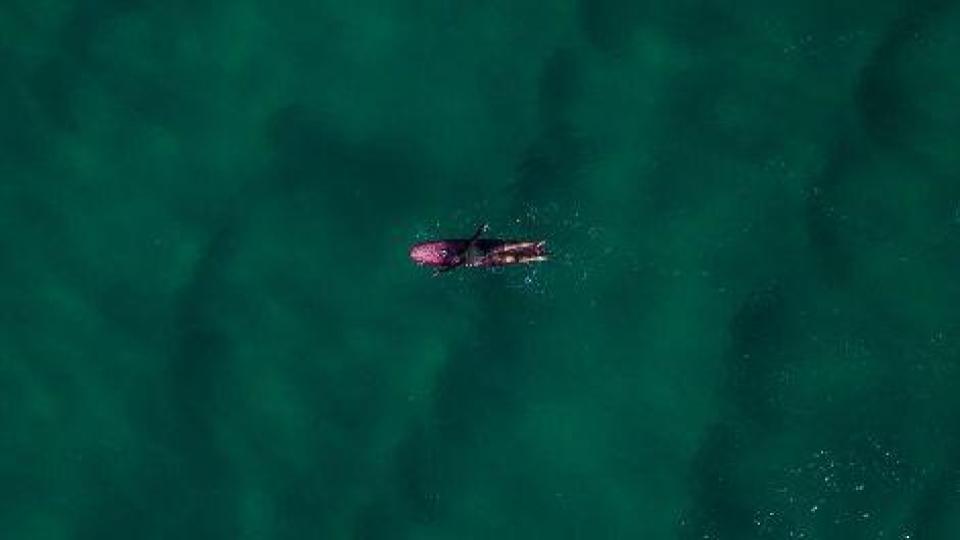
Capture a dramatic long exposure shot. As with conventional photography, you need a long exposure time – 2s or more, depending on the light.
You can create some great effects by moving a light source around while the camera shutter exposes – hit the shutter button (ensuring a longer exposure time) and try waving a torch around. Check out the below – you’ll get the idea:
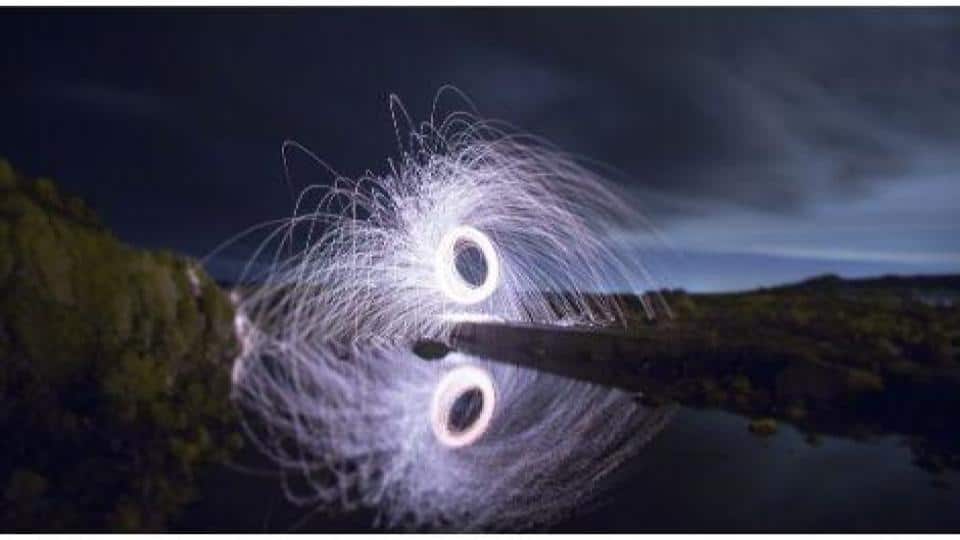
These types of shots work well in lower light.
Create a tracking shot to get more context of your location – this is actually a video, and not a photo, and will be much easier if your drone has a tracking function like the DJI Spark’s Active track or the Zerotech Dobby’s target track. Send your drone up and select yourself as the target, before selecting the flight pattern of the drone. The drone will then capture your environment (whilst keeping a fix on you) and provide a lot more context than a photo ever could. See below for an example:
What Should I Look for in a Selfie Drone?
- Generally speaking, selfie drones are smaller, compact and portable versions of larger drones, but they have the added benefit of being more affordable too. For most people, taking a larger drone on a family holiday would be inconvenient, but taking a selfie drone is no problem whatsoever.
- We value picture quality highly but found that most selfie drones take good quality pictures. Video quality varies more between the models, so pay attention to this if you will be capturing video footage. Generally speaking, 1080p (HD) video is sufficient for most uses and looks good on most TV’s, unless you have a very large screen. Take a look at this article for more information on video resolutions.
- Discretion is also an important factor, something the larger drones don’t offer due to how loud they can be (because of the powerful motors needed to haul their greater weight). While using a drone in public, the drone itself can often become the attraction as onlookers stare, ask questions and sometimes ask if “they can have a turn”!
- If you have a bit more to spend, and you want to capture video selfies, it’s worth getting a model with automated flight modes and tracking. With these functionalities, the drone will keep you in the shot as it follows you around capturing footage.
- Collision detection is a great safety feature, but if your budget will not extend then you’ll have to make sure people keep their distance and that you keep your distance from building and hazards.
- Lastly, and very importantly, portability is a key consideration. As mentioned before, taking selfies is often an impulsive activity. You are much more likely to capture a particular moment of inspiration or wonder if the drone is handily sitting in your pocket or bag.
The Best Selfie Drones
So, let’s examine the best selfie drones available today and see how each one stacks up against the rest:
DJI Spark
Portability – 5.6 in X 5.6 in X 2.2 in
Battery Life (Flight Time) – 16 minutes
Range – 1.2 miles
Camera – 1080p
Pros:
– Simple to use
– GPS (stable hovering, return to home function)
– Active track
– Collision avoidance
– Adjustable 2 axis gimbal for ‘birds-eye view’ aerial shots
Cons:
– Battery life isn’t brilliant
– No 4K camera
– Doesn’t fold down to a pocketable size
Who is it for?
Those looking for an easy to use, stable drone. It’s a very good selfie drone but it can also be used further afield due to its decent range.
Those who want to capture video selfies. The Spark features active track, so it will follow you and capture video leaving you free to focus on what you are doing. It also features ‘Quickshot’ automated flight modes where the drone will smoothly fly a predetermined loop or flight path whilst filming and keeping you in the center of the frame.
Those who want to take indoor selfies and videos – GPS functionality provides hover stability while collision detection (frontal) keeps you from shredding the curtains! It also has Faceaware technology, which means it can take off automatically from the palm of your hand by recognizing your face. Further, it has gesture control, so you can hold up your hands in a certain shape, and it will take a photo for you.
Who’s it not for?
Those who need a drone for high-end photos or videos. The absence of a 4K camera and a 3 – axis gimbal makes it unfit for these customers. The 1080p video is very good for most uses, apart from viewing on very large TV’s and professional use.
Sparky Mark
The first drone on the list is the popular DJI Spark, one of the very best selfie drones available. A selfie drone that can be launched from the palm of your hand that packs quite a lot of features into one compact bundle. It has a lot of great technology from the more expensive DJI drones. It is very easy to set up and use, with a great app.
The drone itself is a very high-quality build and the controller is very ergonomic and easy to use. I’ve owned a Spark for a long while now and it has been a faultless performer.
Read this article to learn some tips and tricks for the Spark.
Zerotech Dobby 
Portability – Folds down to – 5.3in x 2.6in x 1.46in
Battery Life (Flight Time) – 9 minutes
Range – 330ft
Camera – 1080p
Pros:
– Foldable, and can slip into a pocket
– Simple and fun to use
– Automated flight recording mode
– Facial recognition
– Target tracking
– Image stabilization
Cons:
– Not ideal for serious photography
– Short flight time
– Tiny bit flimsy
Who is it for?
Those who want to have some fun and have a little drone in their back pocket anytime they need it.
Who’s not for?
Those looking for longer flying sessions.
Those looking for pro-quality video
Free Dobby
Dobby is free! Is something we couldn’t resist shouting when we unleashed this tiny little selfie drone into the sky. This really is the drone to show someone when they ask what a selfie drone is. The camera is good quality but sadly loses points for not being stabilized by a gimbal (electronic stabilization only), although high-end photography is not really the aim of this drone.
With the attractive and functional design, pocketability and serviceable camera, it checks all the boxes and is one of the best selfie drones on the market.
If you are interested in small drones, also check out our article on mini drones.
AirSelfie ASO1
Portability – 2.7in x 3.7in x 0.4 in
Battery Life (Flight Time) – 3 min
Range – 60 feet
Camera – 1080p
Pros:
– Stylish design and nice materials
– Good quality pictures in HD
– Genuinely pocketable
– Incredibly light
Cons:
– Poor app design
– Very short flight time
– No image stabilization
– Vulnerable to any wind
Who is it for?
Those who need a drone to take pictures and video as and when they need it, and for those who value portability above all else.
Who’s not for?
Those who want a drone that they can fly for more than 3 minutes (unless you don’t mind charging from a powerbank….often).
Micro Machine
Like the Zerotech Dobby, the AirSelfie 2 is a tiny portable drone that is designed for quick bursts of use whenever it’s needed.
This drone can only be used for selfies, and no other use case due to the minuscule flight time. If you want to get a drone to enjoy flying it, then don’t buy this.
GoolRC T33
Portability – 5.9in x 3.8in x 1.5in
Battery Life (Flight Time) – 6-8 minutes
Range – 120 ft
Camera – 720p
Pros:
– Affordable
– Foldable
– A joy to fly
– Some really nice features and app design
– Altitude hold
– Headless mode (read this article to learn about this flight mode)
Cons:
– Struggles a bit in terms of battery life and range
– Bulkier than other selfie drones
Who is it for?
Those looking for a rugged and great value selfie drone.
Who’s it not for?
Someone looking for a portable option.
The Dog’s Goolies
Coming in slightly larger than the previous two entries is the GoolRC T33. Although this model resembles more traditional drones it is still a selfie drone by design. It’s a neat quadcopter that is foldable, but it’s nowhere near as pocket friendly as the Zerotech Dobby or the AirSelfie. Its flight time is also a little lower than these models and its range is a little less than the Zerotech. The camera quality is also perfectly acceptable, but we feel it misses out on a couple of points by not being very well stabilized.
Yuneec Breeze 4k
Portability – 7.7 x 7.7 x 2.6 inches
Battery Life (Flight Time) – 12 minutes
Range – 240 ft
Camera – 4k
Pros:
– Stunning 4K camera
– GPS functionality (stable hovering)
– Vertically adjustable camera
– Automated flight modes
– Follow me mode
– Image stabilization
Cons:
– Not pocket-friendly (but fits easily in a backpack)
– No gimbal/mechanical stabilization
Who is it for?
Those who want to shoot video selfies (as well as photos), want follow me functionality and automated flight modes, and stable hovering.
Who’s it not for?
Those who need a selfie drone that fits in a pocket.
Bright and Breezy
We were very impressed with the design of this drone and how easy it was to operate; you could say it was a breeze’ to master (!). Although a little bulkier than some drones on this list, it seemed to be an excellent compromise between portability and power. With a range of up to 240ft, this should be more than enough reach for those looking to push their drone further. It also boasts a 4K camera so photography aficionados are catered for. GPS is another big feature, as it provides stable hovering and means you don’t have to worry about it drifting into people and objects. Automated flight modes round this drone out and are such a useful feature for video dronies/selfies.
Hovercamera Passport
Portability – 7.2 x 5.2 x 1.3 inches (folded)
Battery Life (Flight Time) – 10 minutes
Range – 65 ft
Camera – 4k
Pros:
– Wonderful design
– Excellent 4K camera
– Auto tracking modes
– Very portable
Cons:
– Short-range
– Limited battery life
Who is it for?
Those looking for short bursts of use that also require the benefit of an impressive 4K camera.
Who’s it not for?
Those who don’t need pro-quality video or need a drone to stay in the air for a good amount of time.
Passport to portable selfies
We really enjoyed testing this drone, it was made from a solid carbon fibre frame and felt like it could withstand even the toughest of crashes. Its battery life is a little bit lower than we would have liked but its lush 4K camera more than makes up for this. We were a bit disappointed by its range too, but in all fairness that may be a price worth paying for such a beautifully designed selfie drone.
Wingsland S6
Portability – 5.43 x 3.11 x 1.06 in (folded)
Battery Life (Flight Time) – 10 minutes
Range – 300 ft
Camera – 4k
Pros:
– Automated flight modes (including ‘Follow Me’)
– 4K camera
– Pocket-friendly folding design
Cons:
– Battery life is average
– Reports of technical issues from some users
Who is it for?
Those looking for a 4K camera selfie drone that can be carried around in their pocket.
Those who are interested in video selfies can take advantage of the automated flight modes.
Who’s it not for?
Those looking for a selfie drone that can stay in the air for longer than 10 minutes a charge!
Multi-colored marvel
The Wingsland S6 packs one hell of a punch and gathers a lot of capability into one tiny package. Its battery life isn’t brilliant but there are a lot of positives – from its funky design, to its 4K camera.
It comes in several different color schemes, each more swish than the last. Our particular favorite was the military fatigue design!
Goolsky JJRC H37
Portability – 5.3in X 2.6in X 1.0in (folded)
Battery Life (Flight Time) – 5-8 minutes
Range – 300ft
Camera – 480p
Pros:
– Very cheap
– Usable range
– Headless mode to avoid losing track of the drones orientation (read here to learn about headless mode)
Cons:
– Larger than average
– Short flight time
– Camera captures maximum of 480p video
Who is it for?
Those looking for a cheap and compact selfie drone.
Who’s it not for?
People want higher quality photos and footage
The Best Selfie Drones – Conclusion
So, we have a difficult choice to make now. We need to pick a winner. The truth is we had one all along and the eagle-eyed among you may have already worked out which one it is.
Our winner is the Zerotech Dobby. Now it was close between this and the Hovercamera Passport but Dobby has narrowly won the day. Here’s why:
The Zerotech Dobby doesn’t have a 4K camera, but here’s the thing; it doesn’t need one. A selfie drone isn’t designed for state-of-the-art photography. It’s designed for ease of access and fun. If cutting edge technology was the main selling point of a selfie drone then the Hovercamera would win, after all, it’s an incredible amalgamation of features and tech.
The Zerotech Dobby encapsulates everything that makes a selfie drone special. It’s tiny, reliable, well made and above all else – fun.
One more time: Dobby is free!
ALSO READ: Best Syma Drones – Quick Round Up of the Top Models




